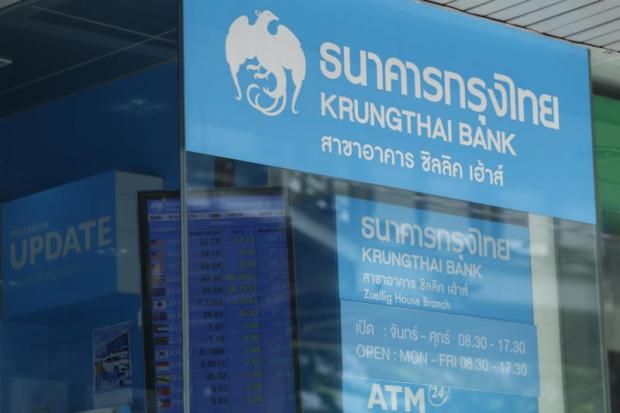
Krungthai Bank (KTB) plans to shut fewer branches this year than the 92 it closed in 2017, while maintaining its employee count at 24,000, says its chief.
The plan was formulated after KTB found that the swift, widespread closures last year had caused difficulties for customers, particularly in provincial areas, said president Payong Srivanich.
Digital banking will take more time to catch on in provincial areas, he said. Under-served customers will be the bank's focus, as it aims to migrate them to the digital platform, Mr Payong said.
KTB, the country's third-largest commercial bank by branch network, had 1,121 branches across the country, of which 862 were located upcountry, at the end of last year. The bank's 92 branch closures last year was the largest number among its peers.
Bangkok Bank had the most extensive branch network at the end of 2017 at 1,168, up 11 from a year earlier. Siam Commercial Bank (SCB) was second with 1,161.
Bank branches have been shuttered in recent years as more customers use online banking services. In 2017, 230 brick-and-mortar commercial bank branches were closed nationwide.
SCB earlier this week announced it would trim its staff from 27,000 to 15,000 over the next three years and close 99 traditional branches this year. SCB will further open a new model called Express -- an automated branch with a handful of employees. Some 150-200 Express outlets are targeted to be opened by year-end, up from 15 at present.
Under KTB's five-year business plan through 2022, it aims to cut personnel expenses, particularly branch staff, by 30%. The bank has rotated branch staff to other needed areas.
KTB, also the third-largest commercial lender by assets, usually offers an early retirement programme. Given that the Financial Institutions Development Fund holds the lion's share of KTB -- 55% -- the bank is considered state-owned, making staff recruitment and firing more complicated than for its peers.
Mr Payong said data analytics would help the bank assess consumer behaviour.
The bank this year set a historic budget for IT and application investment at 10 billion baht.
He also said the bank would continue to set aside a high loan-loss provision this year in compliance with the International Financial Reporting Standard Version 9, after it started to comply with the new accounting standard in the fourth quarter of 2017.
KTB recently reported a net profit of 22.4 billion baht for 2017, plunging 30.5% because of a 34.1% surge in loan-loss charges.
But Mr Payong is optimistic that the bank's gross non-performing loan (NPL) ratio will fall to below 4% by the end of this year from 4.19% at the end of 2017.
As of December, KTB's consolidated NPLs increased to 103 billion baht, of which 98 billion belonged to the bank.
KTB shares closed yesterday on the Stock Exchange of Thailand at 20.4 baht, up 20 satang, in trade worth 849 million baht.
